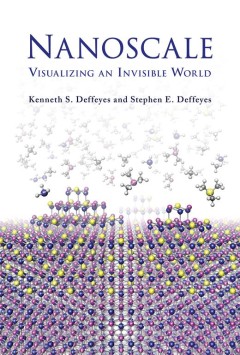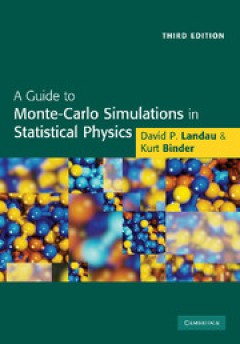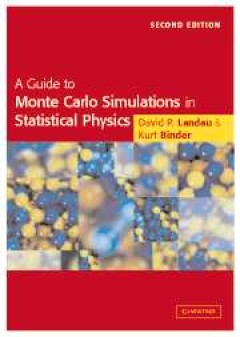Filter by

Nanoscale: Visualizing an Invisible World
The world is made up of structures too small to see with the naked eye, too small to see even with an electron microscope. Einstein established the reality of atoms and molecules in the early 1900s. How can we see a world measured in fractions of nanometers? (Most atoms are less than one nanometer, less than one-billionth of a meter, in diameter.) This beautiful and fascinating book gives us a …
- Edition
- -
- ISBN/ISSN
- 9780262322522
- Collation
- -
- Series Title
- -
- Call Number
- -

A Guide to Monte Carlo Simulations in Statistical Physics
Dealing with all aspects of Monte Carlo simulation of complex physical systems encountered in condensed-matter physics and statistical mechanics, this book provides an introduction to computer simulations in physics. This edition now contains material describing powerful new algorithms that have appeared since the previous edition was published, and highlights recent technical advances and key …
- Edition
- Ed. 1
- ISBN/ISSN
- 9780511994944
- Collation
- -
- Series Title
- -
- Call Number
- -

A Guide to Monte Carlo Simulations in Statistical Physics
This new and updated edition deals with all aspects of Monte Carlo simulation of complex physical systems encountered in condensed-matter physics, statistical mechanics, and related fields. After briefly recalling essential background in statistical mechanics and probability theory, it gives a succinct overview of simple sampling methods. The concepts behind the simulation algorithms are explai…
- Edition
- -
- ISBN/ISSN
- 9780511614460
- Collation
- -
- Series Title
- -
- Call Number
- -

Our Nanotechnology Future
This book explores nanotechnology, a rapidly evolving and growing field with applications in a large number of areas. The concepts and physics are highlighted through topics such as nanoscience, quantum effects, nanostructures, and new forms of carbon. Applications and potential health and safety implications of nanomaterials are discussed for healthcare, food production, electronics, defence a…
- Edition
- -
- ISBN/ISSN
- 9789048534623
- Collation
- -
- Series Title
- -
- Call Number
- -
 Computer Science, Information & General Works
Computer Science, Information & General Works  Philosophy & Psychology
Philosophy & Psychology  Religion
Religion  Social Sciences
Social Sciences  Language
Language  Pure Science
Pure Science  Applied Sciences
Applied Sciences  Art & Recreation
Art & Recreation  Literature
Literature  History & Geography
History & Geography